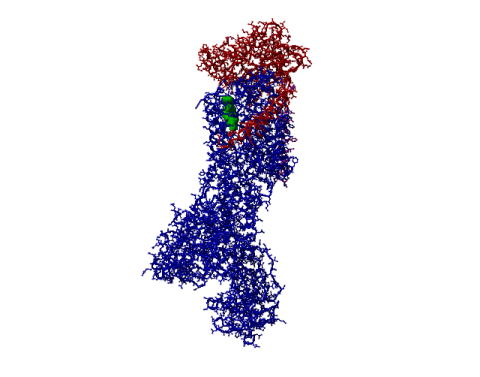Reproductive epidemiology and toxicology
Code: MED-BMS66, study points: 3, period 2 / W40B (October: Thursday and Friday).


Coordinators:
Dr. N. Roeleveld, Department for Health Evidence, Radboud Institute for Health Sciences, Nel.Roeleveld@radboudumc.nl
Dr. S. Heemskerk, Department of Pharmacology and Toxicology, Radboud Institute for Molecular Life Sciences, Suzanne.Heemskerk@radboudumc.nl
Code: MED-BMS66, study points: 3, period 2 / W40B (October: Thursday and Friday).


Coordinators:
Dr. N. Roeleveld, Department for Health Evidence, Radboud Institute for Health Sciences, Nel.Roeleveld@radboudumc.nl
Dr. S. Heemskerk, Department of Pharmacology and Toxicology, Radboud Institute for Molecular Life Sciences, Suzanne.Heemskerk@radboudumc.nl
Description
This course encompasses the fields of reproductive epidemiology and toxicology, covering the entire spectrum from fertility and subfertility through pregnancy complications to adverse perinatal outcomes (e.g. preterm birth and low birth weight) and birth defects in offspring, as a result of exposure to non-genetic risk factors and gene-environment interaction.
After a general introduction into the topic, the first week is focused on reproductive toxicology and teratology with emphasis on mechanisms, animal experiments, and alternative test methods. The second week is dedicated to advanced methods in reproductive and perinatal epidemiology, which may differ from epidemiologic methods used to study other disorders. In addition, the main risk factors for adverse outcomes, such as medical and recreational drug use, nutrition, lifestyle and environmental factors, are addressed.
In weeks 3 and 4 of the course, you will have the opportunity to apply the knowledge and insights acquired during the first weeks in a small group (2-3 students) assignment and a summative test (60% of grade) in week 4. The topics of the group assignments will be personalized, depending on the background and interests of the students and their primary focus on epidemiology or toxicology. The presentations and discussions of the group assignments on the last day of the course will serve as a test moment (40% of grade) and as a possibility to disseminate the group results to the other course participants and the teachers.
This course encompasses the fields of reproductive epidemiology and toxicology, covering the entire spectrum from fertility and subfertility through pregnancy complications to adverse perinatal outcomes (e.g. preterm birth and low birth weight) and birth defects in offspring, as a result of exposure to non-genetic risk factors and gene-environment interaction.
After a general introduction into the topic, the first week is focused on reproductive toxicology and teratology with emphasis on mechanisms, animal experiments, and alternative test methods. The second week is dedicated to advanced methods in reproductive and perinatal epidemiology, which may differ from epidemiologic methods used to study other disorders. In addition, the main risk factors for adverse outcomes, such as medical and recreational drug use, nutrition, lifestyle and environmental factors, are addressed.
In weeks 3 and 4 of the course, you will have the opportunity to apply the knowledge and insights acquired during the first weeks in a small group (2-3 students) assignment and a summative test (60% of grade) in week 4. The topics of the group assignments will be personalized, depending on the background and interests of the students and their primary focus on epidemiology or toxicology. The presentations and discussions of the group assignments on the last day of the course will serve as a test moment (40% of grade) and as a possibility to disseminate the group results to the other course participants and the teachers.
Main learning goals
After completion of the course, students are able to
1. Define the general principles of reproductive epidemiology and toxicology.
2. Explain the mechanisms of action involved in reproductive toxicity and teratogenicity.
3. Make an informed choice between animal experiments and alternative test methods.
4. Apply advanced methods in reproductive and perinatal epidemiology.
5. Distinguish the most important risk factors for adverse reproductive outcomes.
6. Explain the importance of the placenta in reproductive toxicity.
7. Evaluate and/or design reproductive epidemiologic and/or toxicologic studies.
After completion of the course, students are able to
1. Define the general principles of reproductive epidemiology and toxicology.
2. Explain the mechanisms of action involved in reproductive toxicity and teratogenicity.
3. Make an informed choice between animal experiments and alternative test methods.
4. Apply advanced methods in reproductive and perinatal epidemiology.
5. Distinguish the most important risk factors for adverse reproductive outcomes.
6. Explain the importance of the placenta in reproductive toxicity.
7. Evaluate and/or design reproductive epidemiologic and/or toxicologic studies.
